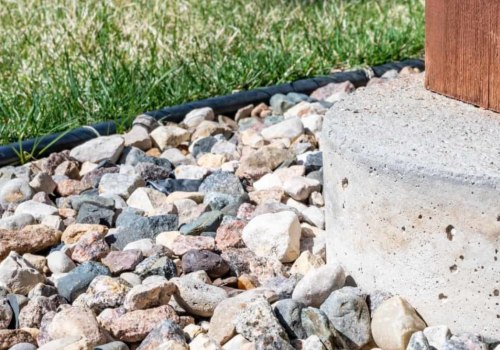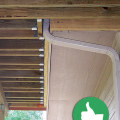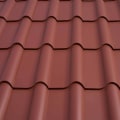Building a deck is an exciting project that can transform outdoor spaces into functional and enjoyable areas for relaxation and gatherings. One of the critical aspects of deck construction, especially when using a ledger board for support, is ensuring proper clearance. Clearance refers to the space needed between the ledger-supported deck and any adjacent structures or surfaces, ensuring structural integrity, proper drainage, and ease of maintenance. Adequate clearance helps prevent moisture buildup, rot, and pest intrusion, which can significantly impact the longevity of the deck. Whether you're constructing a deck on a home or commercial property, understanding clearance requirements is essential for a successful, safe build.
Purpose of a Ledger Board in Deck Construction
A ledger board serves as one of the primary supports for a deck, attaching the deck structure to an adjacent building, typically the house. By anchoring to a solid structure, the ledger board allows for the stability and durability of the deck without requiring extra footings along the side closest to the building. This anchoring method reduces construction costs and simplifies the deck design. However, because the ledger board relies on the building's wall for support, clearance is needed between the deck and house to prevent water damage and allow for ventilation. Without proper clearance, moisture can become trapped, potentially leading to structural decay over time.
Ideal Clearance Between the Deck and House Siding
The ideal clearance between the ledger board and any siding material is typically around ½ inch to 1 inch, though this may vary based on local building codes and materials used. This gap is critical because it helps prevent water from accumulating where the deck meets the building. Rain and condensation are common in outdoor settings, and if the ledger board is directly flush with the siding, moisture can infiltrate and create rot or mold on the house’s structure. Furthermore, clearance provides enough room for air to circulate, drying out moisture and minimizing the risk of decay. For properties with vinyl or wood siding, this clearance is even more essential, as these materials are more vulnerable to water damage than brick or stone facades.
Flashing and Waterproofing Considerations
Clearance alone isn't enough to protect the house and deck from water damage. Flashing, a thin waterproof material, is installed between the ledger board and the house to deflect water and prevent it from seeping into the structure. Metal flashing, often made from galvanized steel or aluminum, is the most common choice, as it resists corrosion and is highly durable. Some building codes may require a combination of clearance and flashing to protect the ledger board and surrounding areas. In humid or high-rainfall areas, additional waterproofing measures, such as caulking or water-resistant membranes, can further protect the deck’s structure from moisture intrusion.
Clearance for Joist Hangers and Fasteners
The fasteners and joist hangers used to secure the ledger board to the house also require proper spacing to ensure long-term durability. Deck screws and bolts should penetrate deeply enough to secure the ledger to the wall but should not compress the clearance gap, as this could reduce airflow. Joist hangers should align properly with the clearance space to maintain stability without compressing the flashing. In areas with heavy rainfall or frequent humidity, stainless steel hardware is recommended to resist corrosion. These considerations become even more important for decks built close to the ground or over soil, where moisture levels can be higher and lead to faster corrosion of metal components.
Clearance for Decks Built Over Ground-Level or Sloped Terrain
When building a deck over ground-level or sloped terrain, additional clearance is often needed between the deck and ground to allow for water drainage and air circulation. Without sufficient clearance, moisture from the soil can rise and affect the wood components, leading to premature decay. Typically, ground-level decks require at least 12 inches of clearance between the bottom of the deck and the ground. For decks over uneven or sloped terrain, adjusting the clearance is essential to maintain a level deck surface and support drainage. Ground-level decks also benefit from a gravel base to further aid in water drainage, protecting the wood from direct soil contact.
Professional Consultation and Local Building Codes
Ensuring the proper clearance and following local building codes is essential to the success and safety of a deck project. Building codes vary by location, and some regions may have specific clearance requirements to account for climate conditions, material types, or fire safety regulations. Consulting professionals like Decking Gold Coast Experts can provide valuable insights into local regulations and best practices for deck clearance, waterproofing, and structural safety. They can help ensure that all aspects of deck construction, including clearance and flashing, meet code requirements and contribute to a stable, long-lasting deck.
Conclusion: The Importance of Clearance in Ledger-Supported Decks
In summary, proper clearance is essential when building a deck supported by a ledger board, as it ensures structural stability, prevents moisture damage, and allows for necessary ventilation. From the space between the ledger board and siding to the additional clearance required over ground-level terrain, each element plays a role in preserving the deck's integrity. With the right clearance, flashing, and hardware, a ledger-supported deck can remain sturdy, safe, and beautiful for years to come. By consulting professionals and adhering to local building codes, homeowners and builders can enjoy the benefits of a well-constructed outdoor space that stands the test of time.







